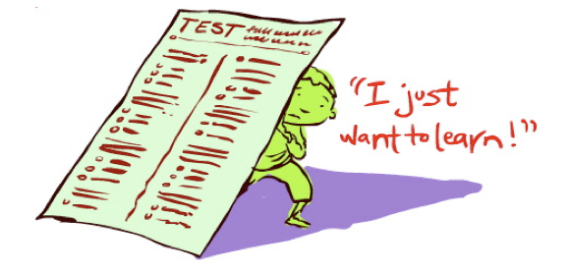
What is the impact of these types of schools on students’ future results? What are the potential effects that come from the massification of these schools? Many of these effects were not considered when new laws are discussed, here I present some interesting issues which the international evidence shows to be relevant.
Three criticism regarding High-Performing Public Schools

In many countries, like mine (Chile), there have been mainly three types of criticism regarding High-Performing Public Schools, particularly since their expansion or because new laws regarding those types of schools were on the public agenda.
- The first one, is that these schools promote educational improvement for a small number of students, through a strategy of radical selection of the most talented but without any value added by the school itself, like a zero-sum game.
- The second criticism is that, due to the loss of peer effects –understood as the influence of each student by fellow pupils found in the same class or school (Dupriez, 2010)– or special help for students with learning difficulties, the selection strategy could put the pupils at the schools of origin at a disadvantage when these talented students leave.
- Third, it also promotes the concentration of the best principals and teachers geographically and expands their educational opportunities exclusively.
The empirical evidence available to answer these questions is very recent and shows mixed results in terms of the first question – depending on the educational system and the estimation methodology used, while evidence for the second and the third is even scarcer, but shows a small negative effect for those schools that loose their best students.
International evidence about High-Performing Public Schools

The international evidence shows that separation or grouping of students is common in most school systems, with policy differences in form and purpose (Dupriez, 2010). In various OECD countries there are generalized policies for public selective schools, characterized by regulated procedures to select students based on their academic performance and achievements during primary education level or throughout their primary school career to be tracked to more selective secondary education programs – the separation model – (Clark, 2010).
There are other countries where a limited group of public funded schools, particularly in secondary education, require high academic standards for students interested in being selected, for example Magnet Schools and Exam Schools in the United States; grammar schools in the United Kingdom; the selective public schools in Australia; and those schools managed by the Metropolitan Commission for Educational Public Institutions in Mexico. There are similar examples in China, Romania, Singapore and Turkey, where students are assigned to secondary schools almost entirely on the basis of admission examinations; so too in Trinidad and Tobago. In the case of public education in Chile, there are emblematic schools (Liceos emblemáticos) and Bicentenary schools.

These schools have in common high standards for entrance (highly selective), which implies strong competition for a limited number of places; within the school itself there is the assumption that students will benefit from interaction with high achieving fellow students (Dobbie & Fryer, 2014). However, in terms of the impact on the school system in general, the evidence is consistent for the United States and England that highly selective schools generate an increase in socioeconomic differences within the student body, leading to greater social and cultural segregation (Dobbie & Fryer, 2014; Clark, 2010); on the other hand, there is greater racial and ethnic integration in these schools (Rosell, 1992; Finn & Hockett, 2012b). Moreover, it is possible to foresee that this type of policy may not have an impact on the majority of the most vulnerable students, because these approaches are limited to a small number of schools and districts (Neild, 2002); the impact of the High-Performing Public Schools will be restricted, therefore those strategies to improve opportunities for most students ought to be more structural than the creation of selective schools only (Neild & Balfanz, 2001).
Effects on national test scores of attending a High-Performing Public School

In regard to the outcomes of high performance public schools on standardized tests, the international evidence is mixed. For the United States, the recent literature shows that the selected students would not achieve better results; the effects of this policy are likely to be small or the improvements in standardized tests will be marginal (Allensworth et al, 2016; Angrist y Rokkanen, 2015; Abdulkadiroglu, Angrist y Pathak, 2014; Dobbie y Fryer, 2011, 2014), which is consistent with previous research that used less robust methodologies (Cullen, Jacob & Levitt, 2005). Those conclusions remain even when the entrance is open to all students and selection is at random (Cullen, Jacob y Levitt, 2006; Ballou y Liu, 2009). In this sense, Zhang (2010) does not find gains associated with randomly selected students in Chinese schools.
Consistent with the evidence found for the United States, Clark (2010) estimated that in England, public selective schools tend to have at most a small positive impact on standardized tests, a finding echoed by Galindo-Reuda and Vignoles (2004), who find no effect on low or medium skilled students, but suggest that there exists a positive effect on students with greater abilities (top 20 percent). These results support the proposal of Finn & Hocket (2012b) that these schools should focus on students with the best performance in the country.
On the other hand, the results for developing countries show that positive effects are associated with these selection mechanisms. Pop-Eleches and Urquiloa (2013) find a positive effect with the enrollment in the best schools in Romania; as does Durstan (2010) for Mexico, who shows that to attend an elite school is associated with better test results; also Jackson (2010) shows that attendance at the best schools in Trinidad and Tobago is associated with substantial positive effects in terms of points obtained on the test at the end of secondary education. For Chile, Bucarey et al (2014) show that attending the most prestigious High-Performing Public School for men in Chile would be associated with an increase of university selection test scores (PSU).
Effects on middle and long term indicators of attending a High-Performing Public School

The literature is inconclusive about the impact of these schools on middle term indicators such as entry rate to universities or secondary education graduation; although in the case of England there is an increased probability that students from high-performing public schools will attend university (Clark, 2010), the impact in the United States is small in terms of university entry and secondary education graduation (Dobbie & Fryer, 2011, 2014).
With regard to potential long term effects, it is possible to say that “to the extent that attending an exam school with high-achieving peers increases social capital in ways that are important for later outcomes independent of college enrollment, graduation, or human capital, then there is reason to believe that our conclusions are premature and the true impact of an elite exam school will only be understood with the passage of time” (Dobbie & Fryer, 2014, pp 74).
In this sense, Dale and Krueger (2011) show that at least for the United States, there are no positive effects on labor income for those who have attended selective schools. However, there are notable exceptions for different population subgroups, such as those of Hispanic or Afroamerican origin whose parents have little education (and presumably low socio- economic status), who tend to have a much greater return from school selectivity.

While it is true that causality between educational outcomes and peer effects for these kinds of schools cannot be determined with exactitude, principally because of methodological issues (Angrist, 2014), many of the previously cited studies take into account the existence of other effects – positive as well as negative – associated with attendance at these types of schools.
POSITIVE EFFECTS

It has been shown that among the positive effects are the reduction of disciplinary problems and arrests (Cullen, Jacob & Levitt, 2006), as well as direct effects derived from specialization in different areas provided by these highly selective public schools (Abdulkadiroglu, Angrist & Pathak, 2014). For the students themselves, it has been noted, there is a very desirable feature, which is that they feel more satisfied with their educational experience in the High-Performing Public Schools (Allensworth et al, 2016).
NEGATIVE EFFECTS

With regard to potentially negative effects, it has been observed that students attending high-ability schools tend to have an academic self-concept or perception of themselves that is lower than if they had been educated in schools requiring less or average ability. The last result is derivated from the fact that a person’s identity is constructed comparing the behavior, emotions, results, status and other characteristics with other people and groups (Zell & Alicke, 2009).

Another view is that the effect of the migration of the best students to highly selective schools on the students who stay in the schools of origin has a slight negative effect on standardized test scores for non-migrating students (Altonji, Huang & Taber, 2015), an effect that could be due to the fact that migration is generally that of a single student. Another associated effect is the reduction in effort by parents to support their children and the within schools sorting of teachers (Pop-Eleches & Urquiloa, 2013).
In Conclusion

The existence of circumstantial evidence about the effectiveness of these types of academically highly selective schools coupled with the lack of clarity regarding the causality of the obtained results, makes it almost impossible to differentiate the effect itself or that it is the result of the school being highly motivated; or having better quality teaching standards, different curricula, and/or teachers and principals with greater skills; or other characteristics of the school. In this context, the words from one principal explaining the United States’ experience make sense; “Do the kids do well because of us or in spite of us? We're not sure.” (Finn & Hockett, 2012a, p.193). Or does it reflect what fellow pupils bring to the class, with the likelihood that the peer culture has other associated effects, making it difficult to determine which elements have an effect and what the nature of their impact is (Finn & Hockett, 2012a).
Given the mixed results from international evidence –positive effects in developing countries and small or no effect in developed countries– and the open question about those kind of schools the following questions become important:
- Does a policy of exhaustive selection of students create a real improvement in students’ performance? If such an effect is said to exist, who benefits the most –by socio-economic level– from a policy of this type?
- Are those kind of schools a real option that allows for academic mobility for lower status students in the educational system or should it be only for those with the best abilities?
- Should the historical role of these schools be recognized and preserved? Or perhaps there should be an overall improvement in public education driven by these kinds of schools.
- Similarly, taking up a point made by Finn and Hockett (2012a, 2012b), is the question of what should be done with children and youth with the greatest academic talent, especially the most vulnerable. Are selective schools an efficient and just public policy?
As you saw this is still and open question with a lot of ongoing research. Happens that in almost every country those kind of schools have many years of existence (100, 200 or more years) so any policy which seek to reform (change, create or destroy) those kind of schools need to consider all the associated effects and not be driven by political issues or political campaigns.
References
- Abdulkadiroglu, A., Angrist, J., & Pathak, P. (2014). The Elite Illusion: Achievement Effects at Boston and New York Exam Schools, Econometrica, Vol. 82, No 1. Enero 2014, 137-196.
- Angrist, J. (2014). The perils of peer effects. Labour Economics. Volume 30. October 2014, Pages 98–108
- Angrist, J., & Rokkanen, M. (2015). Wanna Get Away? Regression Discontinuity Estimation of Exam School Effects Away from the Cutoff, Journal of the American Statistical Association XXX.
- Allensworth, E., Moore, P., Sartain, L. & De la Torre, M. (2016). The Educational Benefits of Attending Higher Performing Schools. Educational Evaluation and Policy Analysis. First published date: October-22-2016. DOI: 10.3102/0162373716672039
- Altonji, J., Huang, C., & Taber, C. (2015). Estimating the cream skimming effect of school choice. Journal of Political Economy, 123(2): 266-324.
- Ballou, D., & Liu, K. (2009). Magnet schools and peers: effects on student achievement. Working paper, Vanderbilt University.
- Bucarey, A., Jorquera, M., Muñoz, P., & Urzúa, S. (2014). El efecto del Instituto Nacional: Evidencia a partir de un diseño de regresión discontinua. Estudios Públicos, 133: 37-68.
- Clark, D. (2010). Selective Schools and Academic Achievement. The B.E. Journal of Economic Analysis & Policy: Vol. 10: Iss. 1 (Advances), Article 9.
- Cullen, J., Jacob, B., & Levitt, S. (2005). The impact of school choice on student outcomes: an analysis of the Chicago public schools. Journal of Public Economics, 89/5-6), 729-760.
- Cullen, J., Jacob, B., & Levitt, S. (2006). The effect of school choice on participants: evidence from randomized lotteries. Econometrica 74(5): 1191-1230.
- Dale, S., & Krueger, A. (2011). Estimating the return to college selectivity over the career using administrative earnings data. NBERG Working Paper 17159. http://www.nber.org/papers/w17159
- Dobbie, W., & Fryer, R. (2011). Exam high schools and academic achievement: evidence from New York City. NBER Working Paper 17286.
- Dobbie, W., & Fryer, R. (2014). The Impact of Attending a School with High-Achieving Peers: Evidence from the New York City Exam Schools. American Economic Journal: Applied Economics 2014, 6(3): 58–75. http://dx.doi.org/10.1257/app.6.3.58
- Dustan, A. (2010). Have Elite Schools Earned their Reputation?: High School Quality and Student Tracking in Mexico City. Draft XX.
- Dupriez, V. (2010). Methods of grouping learners at school, UNESCO, Paris, France. Finn, C. & Hockett, J. (2012a). Exam Schools: Inside America’s Most Selective Public High Schools. Princeton University Press XX
- Finn, C & Hockett, J. (2012b). Exam Schools from the Inside: Racially diverse, subject to collective bargaining, fulfilling a need. EducationNext Otoño 2012 , Vol. 12, Nº 4
- Galindo-Rueda y Vignoles (2004). “The Heterogeneous Effect of Selection in Secondary schools: Understanding the Changing Role of Ability”. IZA Discussion Paper Series, Nº1245,Agosto 2004. http://opus.zbw-kiel.de/voltexte/2005/2434/pdf/dp1245.pdf
- Jackson, C. (2010). Do Students Benefit from Attending Better Schools? Evidence from Rule- Based Student Assignments in Trinidad and Tobago. Economic Journal 120 (549): 1399–1429.
- Neild, R. (2002). The effects of magnet schools on neighborhood high schools; an examination of achievement among freshmen. Draft, University of Pennsylvania.
- Neild, R., & Balfanz, R. (2001). An extreme degree of difficulty; the educational demographic of the ninth grade in an urban school system, paper presented at the anual meeting of American Sociological Association, Anaheim, CA.
- Pop-Eleches, C., & Urquiola, M. (2013). Going to a Better School: Effects and Behavioral Responses. American Economic Review 2013, 103(4): 1289–1324.
- Rosell, C. (1992). The carrot or the stick for school desegregation. Philadelphia: Temple University Press.
- Zell, E., & Alicke, M. (2009). Contextual neglect, self-evaluation, and the frog-pond effect. Journal of Personality and Social Psychology, 97(3), 467-482.
- Zhang, H. (2010). Magnet School and Student Achievement: Evidence From a Randomized Natural Experiment in China, Unpublished Paper, Chinese University of Hong Kong.
This is my very first post and contribution, so any comments is going to be very welcome
The previous research was adapted from a part of an ongoing paper called “The Effectiveness of High-Performing Public Schools in Chile: Added value or just cream skimming?” made together with Juan Pablo Valenzuela (https://www.researchgate.net/profile/Juan_Valenzuela9)
